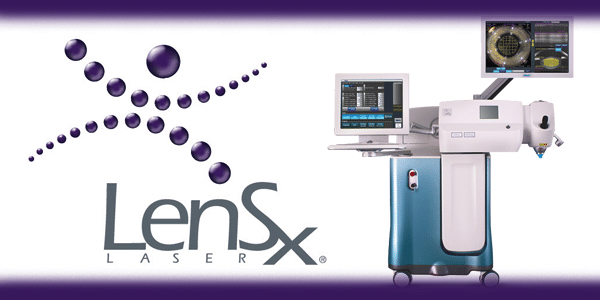
Our team of experienced cataract surgeons at Northern Utah Eye Center is dedicated to providing the highest quality care for cataract patients. We are proud to offer advanced IOLs and state-of-the-art surgical techniques to ensure that our patients receive the best possible outcomes from their cataract surgery.
What Are Cataracts?
Cataracts are a common eye condition that causes cloudiness in the eye’s natural lens. The natural lens inside your eye is partially responsible for focusing the light that enters your eye onto the retina.
When cataracts develop, it causes the lens to be cloudy and hardened. The clouding prevents light from traveling through the typically transparent lens to reach the retina, and the stiffness of the lens prevents the light from being focused correctly.
Cataracts can cause you to have difficulties when performing daily activities, such as driving and reading. They can also cause numerous other visual symptoms besides blurred vision, like glare and halos around lights.
Cataracts typically develop due to aging. However, they can also occur earlier in life due to injury, certain medications, and other factors.
The best way to restore vision affected by cataracts is to have them surgically removed and replaced with an artificial lens during cataract surgery. Cataract surgery is generally safe and effective and can significantly improve vision.
Cataract Symptom Checker






What Happens During Cataract Surgery?
Once your cataract symptoms have begun to interfere with your quality of life, you will need to see your eye doctor for a cataract evaluation. During a cataract evaluation, your eye doctor will look at your eyes to assess the severity of cataracts and to plan your cataract surgery.
Before the procedure begins, your eye doctor will numb the eye with special eye drops. First, your cataract surgeon will make a small incision in the surface of your eye, known as the cornea.
Next, they will remove your cloudy lens using special instruments and ultrasound technology. Once your natural lens is removed, an artificial lens is inserted to replace it.
The small incision on the cornea typically heals on its own and does not require stitches. After the procedure, you will need to visit your eye doctor for a series of follow-up appointments so they can monitor the healing process and ensure a successful recovery.
The entire surgery takes around thirty minutes or less, and most patients are able to go home the same day. Although many people notice an improvement in their vision immediately after cataract surgery, it may take a couple of days for your eyes to adjust to the new lens.
Are You a Candidate for Cataract Surgery?
Take Our Self-Test and Find Out!
What Are IOLs?
An Intraocular Lens, or IOL, is a tiny artificial lens implanted inside the eye during cataract surgery. An IOL replaces the natural lens that has been removed.
IOLs eliminate most cataract symptoms and can reduce or eliminate the need for glasses or contact lenses, depending on which intraocular lens you choose. Various types and materials of IOLs are available, each offering unique visual benefits.
Some IOLs are designed to provide clear vision for distance, while others are meant for near or intermediate vision. Additionally, there are multifocal IOLs that offer clear vision at multiple distances.
Your eye doctor will help you choose the best IOL, depending on your unique visual needs and goals.
What IOLs Do the Cataract Surgeons at Northern Utah Eye Center Offer?
Which IOL or intraocular lens you choose can significantly impact the clarity and quality of vision after cataract surgery. At Northern Utah Eye Center, our cataract surgeons offer various IOL options to meet each patient’s unique visual needs and goals.
Standard Single Vision Monofocal Lenses
Monofocal IOLs offer clear vision at a single point of focus. These lenses are typically cheaper because they are often covered by insurance.
Single vision monofocal lenses can eliminate cataract symptoms and improve the quality of your vision at one distance: near, far, or intermediate. This means you will still need to wear glasses for certain activities after cataract surgery with a monofocal single vision lens.
Multifocal
A multifocal IOL allows you to see clearly at multiple distances, significantly reducing your dependence on visual aids after cataract surgery. At Northern Utah Eye Center, our cataract surgeons offer the new and advanced PanOptix trifocal lens.
The Alcon PanOptix IOL is the first and only trifocal IOL, allowing you to have clear vision at three points of focus: distance, intermediate and near. Multifocal IOLs may require an out-of-pocket cost, but many believe the visual freedom they gain by choosing this lens is well worth it.
Extended Depth of Focus
An EDOF lens, also known as an extended depth of focus lens, is a type of artificial lens that is designed to offer a broader range of clear vision compared to traditional monofocal IOLs, which only provide clear vision at a single distance.
An EDOF IOL aims to decrease the need for glasses or contact lenses for intermediate or near vision tasks by offering clear vision at multiple distances. At Northern Utah Eye Center, our cataract surgeons are proud to offer the Vivity IOL.
The Vivity IOL is an EDOF lens with unique non-diffractive technology, allowing you to experience improved vision with fewer visual disturbances like glare and halos.
Toric
A Toric IOL is a premium lens that can help correct vision to greater clarity in those who have astigmatism. Your eye doctor will let you know if the amount of astigmatism you have warrants a toric IOL during your cataract evaluation.
Toric IOLs can allow you to experience the optimal vision outcome if you have significant amounts of astigmatism. At Northern Utah Eye Center, our cataract surgeons also offer LRI, which is a limbal relaxation incision.
This technique also can help correct astigmatism during cataract surgery.
Lens Comparison
What Technology is Utilized During Cataract Surgery at Northern Utah Eye Center?
At Northern Utah Eye Center, our cataract surgeons utilize state-of-the-art technology during cataract surgery to ensure the best possible vision outcomes. The Alcon Platform offers a range of advanced surgical tools and instruments, including the LenSx femtosecond laser.
This laser uses precision laser technology to create the incisions necessary for cataract removal and the placement of the IOL, reducing the need for handheld instruments and improving the accuracy of the surgery. Another unique technology used at Northern Utah Eye Center is the Centurion Vision System.
The Centurion Vision System is a cutting-edge platform that offers a range of features to enhance surgical precision and safety. These features include advanced imaging technology and highly advanced software that help to guide your cataract surgeon during the procedure, ensuring the most accurate placement of the IOL.

The Centurion Vision System also offers the ability to monitor and control the pressure inside the eye during surgery, reducing the risk of complications. Finally, Northern Utah Eye Center also utilizes the LenSx and ORA (Optiwave Refractive Analysis) technology during cataract surgery.
LenSx is a femtosecond laser system that helps to precisely and accurately prepare the eye for the placement of the IOL. On the other hand, the ORA system provides real-time measurements of the eye’s refractive power during the surgery, allowing your cataract surgeon to make any necessary adjustments to the IOL placement and ensure optimal visual outcomes.
Combining these technologies with the expertise of the Northern Utah Eye Center surgical team offers patients a truly comprehensive and advanced cataract surgical experience.
Do you want to learn more about cataract surgery or explore your IOL options? Schedule a cataract evaluation at Northern Utah Eye Center in Logan, UT, today!
